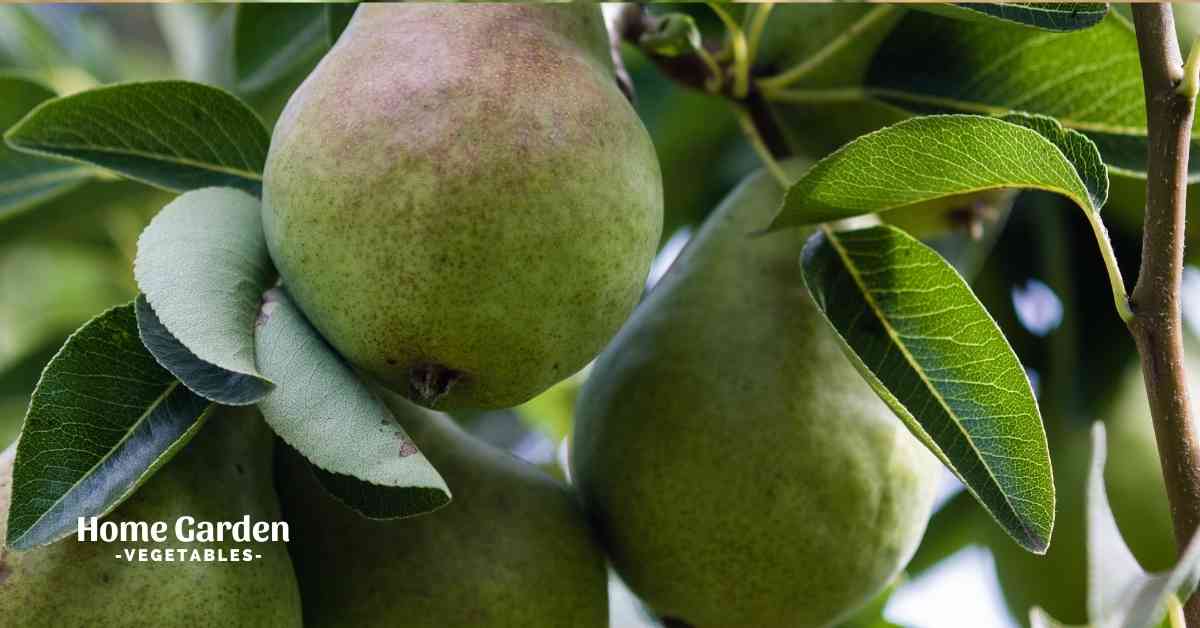The pear tree was a beautiful sight. Its leaves were a deep green, and its branches were covered in white blossoms. The tree was in full bloom and was a sight to behold. The pear tree was a symbol of hope and beauty and a source of comfort to those who gazed upon it.
Pear tree leaves are a beautiful sight. They are large and green and have a delicate, lacey appearance. Pear tree leaves are a welcome addition to any garden, and they are sure to add a touch of elegance to any landscape.
Reader Poll: What online courses would interest you?
Pear Tree diseases
Several diseases can affect pear trees, including fire blight, powdery mildew, and scab.
- Fire blight is a bacterial infection that can kill the branches and fruit of a pear tree.
- Powdery mildew is a fungal infection that can cause the leaves of a pear tree to turn white and the fruit to become deformed.
- Scab is a fungal infection that can cause the fruit of a pear tree to become scabby and misshapen.
All of it on one side and Black leaves on another.
Black Leaves on a Pear Tree
The leaves on a pear tree are green for most of the growing season. However, as the weather starts to cool and the days grow shorter, the leaves begin to change color in the fall. One of the most common colors for fall leaves is black.
Subscribe to our newsletter!
There are a few reasons black leaves may grow on a pear tree. One possibility is that the tree is under stress from a lack of water or nutrients. Pests or diseases may also damage the leaves. Or, the tree may simply be going through a natural process of color change in preparation for winter.
Regardless of the reason, black leaves on a pear tree can be a striking sight. If you see a tree with black leaves, take a closer look and enjoy the beauty of nature in all its forms.
Black Leaf Rust on a Pear Tree
Black leaf rust is a fungal disease that affects pear trees. The condition is characterized by black, powdery spores on the tree’s leaves and fruit. Left unchecked, black leaf rust can cause severe damage to the tree, including leaf loss and fruit drops. Treatment for the disease includes applying a fungicide to the affected areas of the tree.
Treatment of Black Leaves
If your pear tree has black leaves, it may suffer from several diseases. The most common of these is called black spot, which is caused by a fungus. Other conditions that can cause black leaves include anthracnose and scab. If your tree has black leaves, you should take action to treat the problem as soon as possible.
If you suspect your tree has a blackspot, you should remove any affected leaves and dispose of them. You can also treat the tree with a fungicide. Be sure to follow the directions on the fungicide label carefully.
If your tree has anthracnose, you should also remove affected leaves and dispose of them. You should also prune away any affected branches. Scab is a little more challenging to treat. You should remove any affected leaves and dispose of them. You can also treat the tree with a fungicide, but you will also need to destroy any infected fruit.
Judge Severity
There are a few things to consider when judging the severity of black leaves on a pear tree. The first is the overall health of the tree. The black leaves may be a cosmetic issue if the tree is generally healthy.
However, the black leaves could signify a more severe problem if the tree is struggling. The second thing to consider is the location of the black leaves. If they are concentrated in one area, it may be a sign of a localized problem.
If the black leaves are spread throughout the tree, it could signify a more systemic issue. Finally, the number of black leaves should be taken into account. A few black leaves here, and there is no cause for concern, but if the tree is covered in black leaves, it is a sign of a severe problem.
Best Fungicide for Pear Trees
The best fungicide for pear trees is one that is able tocan prevent and control a wide range of fungal diseases. It should be applied early in the season, before conditions have a chance to take hold, and reapplied regularly throughout the growing season. An ideal fungicide will be safe for use around children and pets and will not harm the environment.
Spray on Fruit Trees for Black Leaves
There are a few different things you can spray on fruit trees for black leaves. One option is to mix water and baking soda and pour it on the leaves.
This will help kill any fungus or bacteria that may be causing the black leaves. Another option is to mix water and vinegar and spray it on the leaves. This will also help to kill any fungus or bacteria that may be causing the black leaves.
Conclusion
The conclusion of treating black leaves on a pear tree is to remove the affected leaves and dispose of them. This will help prevent the spread of the disease to other parts of the tree or other trees.

